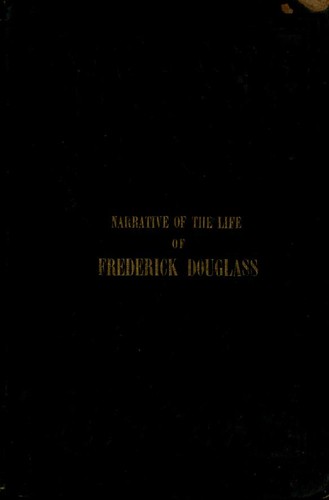Core Frameworks and Concepts
Introduction to Douglass’s Narrative
Frederick Douglass’s autobiography, “Narrative of the Life of Frederick Douglass, an American Slave,” is a seminal work that provides a first-hand account of the brutal realities of life under slavery. Written in 1845, it was a powerful tool in the abolitionist movement. Douglass’s narrative is not just a recounting of his experiences but a compelling argument against the institution of slavery itself.
Framework of Resistance and Empowerment
Douglass’s narrative can be broken down into a framework of resistance and empowerment, which consists of several key components:
1. Awareness and Education
Douglass’s journey begins with the awakening of his consciousness to the injustices of slavery. His access to education becomes a pivotal moment, as reading and writing empower him to articulate his thoughts and assert his humanity. This mirrors the concepts found in Paulo Freire’s “Pedagogy of the Oppressed,” where literacy is a form of liberation.
2. Identity and Self-Realization
As Douglass gains knowledge, he develops a sense of identity beyond that imposed by his slave status. This self-realization is crucial in his quest for freedom. In “Man’s Search for Meaning” by Viktor Frankl, the importance of finding purpose amidst suffering is emphasized, paralleling Douglass’s journey.
3. Resistance and Defiance
Douglass’s narrative includes numerous instances of defiance, from learning to read against prohibitions to physically resisting a cruel overseer. These acts of resistance are critical in his journey and resonate with the themes of nonviolent resistance found in Martin Luther King Jr.’s “Letter from Birmingham Jail.”
4. Escape and Freedom
The culmination of Douglass’s story is his daring escape to freedom. This step underscores the importance of courage and perseverance. Similar to Harriet Jacobs’s “Incidents in the Life of a Slave Girl,” Douglass’s escape is a testament to the relentless pursuit of liberty.
5. Advocacy and Activism
After gaining his freedom, Douglass becomes a leading abolitionist speaker and writer. His narrative serves as a tool for advocacy, much like the works of contemporary activists who use personal narratives to drive social change.
Application of the Framework
The framework of resistance and empowerment can be applied to various modern contexts. For instance, in organizational change, awareness, and education are vital for empowering employees to embrace new directions. The identity and self-realization component can be related to leadership development, where individuals discover their potential and purpose. Acts of resistance in this framework can be seen in whistleblowing or other forms of ethical defiance within corrupt systems. Finally, the advocacy and activism part of Douglass’s framework can inspire corporate social responsibility and community engagement initiatives.
Key Themes
1. The Dehumanizing Effects of Slavery
Douglass’s narrative vividly describes the physical and psychological torment inflicted upon slaves. He illustrates how slavery strips individuals of their humanity, comparing their treatment to that of animals. This theme resonates with Toni Morrison’s “Beloved,” where the legacy of slavery haunts the characters’ lives, emphasizing the enduring impact of such dehumanization.
2. The Power of Education
Education is portrayed as a transformative force in Douglass’s life. His ability to read and write empowers him to question the status quo and articulate his arguments against slavery. This theme aligns with Malala Yousafzai’s “I Am Malala,” which underscores the importance of education in the fight for women’s rights and social justice.
3. The Role of Religion
Douglass critiques the hypocrisy of religious justifications for slavery, contrasting genuine Christian values with the distorted interpretations used to oppress. This theme can be compared to James Baldwin’s “The Fire Next Time,” where Baldwin explores the complex interplay of religion and race in America.
4. The Quest for Identity
Douglass’s journey is also one of self-discovery, as he seeks to define his identity independent of the labels imposed by slavery. This quest for identity is a universal theme, reflected in Ralph Ellison’s “Invisible Man,” where the protagonist grapples with society’s perceptions and his sense of self.
5. The Struggle for Freedom
At its core, Douglass’s narrative is a testament to the indomitable human spirit and the relentless pursuit of freedom. This theme is echoed in Nelson Mandela’s “Long Walk to Freedom,” where Mandela’s fight against apartheid demonstrates the power of resilience and courage.
Final Reflection
Frederick Douglass’s “Narrative of the Life of Frederick Douglass” remains a timeless exploration of the struggle for justice and equality. Its relevance extends beyond the context of slavery, offering insights into the broader human condition and the ongoing fight for human rights. By comparing Douglass’s experiences with those in books like “Pedagogy of the Oppressed” and “Beloved,” we gain a deeper understanding of the universal themes of oppression, resistance, and empowerment.
In contemporary settings, Douglass’s story inspires leaders to foster awareness and education within their organizations, encouraging a culture of empowerment and ethical defiance. The narrative’s emphasis on self-realization and advocacy can guide personal and professional growth, urging individuals to stand up against injustice.
The synthesis of Douglass’s life and work with other literary and historical exemplars provides a rich tapestry for understanding the complexities of identity, freedom, and social change. His narrative challenges us to reflect on our roles as agents of change, urging us to act with integrity and courage in the pursuit of a more just world.
In conclusion, “Narrative of the Life of Frederick Douglass” offers profound lessons applicable across various domains, from leadership to social activism. It serves as a powerful reminder of the enduring impact of individual courage and the transformative power of education and advocacy.

